The state of spirits in global travel retail 2024
As international air travel nears pre-pandemic levels, Joe Bates, Nicola Carruthers and Tom Bruce-Gardyne explore the state of spirits in travel retail.
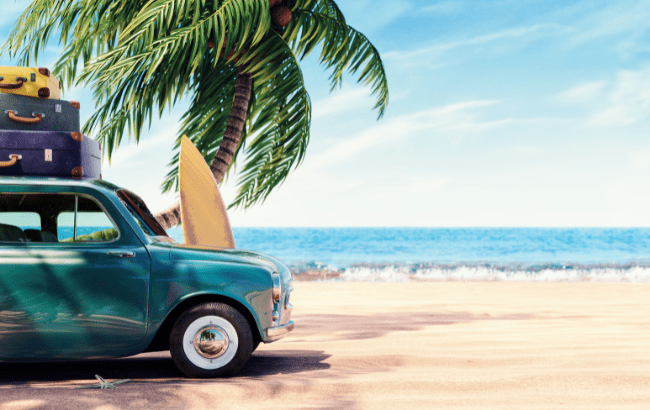
It’s been four years since a global pandemic forced the shutdown of travel, grounding planes, and halting trains and cruise ships. As consumers returned to travel habits, visiting new destinations and hotspots after restrictions were lifted, global travel retail (GTR) has adapted to the ‘new normal’ with digital-first strategies, seamless shopping experiences and engaging activations.
According to data from the International Air Transport Association in January 2024, total 2023 traffic edged even closer to matching pre-pandemic demand at 94.1% of 2019 levels. China’s domestic traffic rose by 138.8% last year from 2022 figures, and is now 7.1% above 2019 levels.
Australia (down by 4.2% compared with 2019) and Japan (down by 3.2% on 2019) are the only major domestic markets yet to recover to pre-pandemic traffic demand.
Holiday market
The cruise sector is also seeing a boost, as an increasing number of younger travellers are coming on board. The Cruise Lines International Association expects 35.7 million passengers to set sail in 2024, 6% more than in 2019. JP Morgan Research predicts the cruise industry will capture approximately 3.8% of the US$1.9 trillion global holiday market by 2028.
In terms of the alcohol sector in duty free, brands face the challenge of appealing to consumers with tighter budgets. “There is an evident squeeze in the prestige-plus segment [US$289.10-plus per litre] over the past three years driven by inflation, cost of living, fewer Chinese passengers and decreased spend among Russian passengers,” says Charlotte Reid, head of GTR insights, IWSR.
“Promotions in the super- and ultra-premium tier is also having an impact on the prestige and prestige-plus segment. There is more focus in the super- and ultra-premium segment (inventory-led), driven by price strategies, twin packs, and 700ml activations, which is impacting prestige and prestige-plus. Recovery is forecast from H2 2024 into 2025.
“Brands are adopting a more differentiated proposition, focusing on quality moments or specific occasions to drive value growth.”
IWSR reveals that the spirits sector saw its volume rise by 4% in GTR in 2023, while value rose by 21%. In volume terms, the sector is expected to post a compound annual growth rate (CAGR) of 5% in the five years to 2028.
“Prestige-plus is forecast to drive the most (volume CAGR 2023-2028 is forecast at 17%) with super-premium-plus growing ahead of the category at 7%,” says Reid. “No-alcohol and agave spirits show high growth rates, no-alcohol volumes are still very small.”
IWSR forecasts that sales of status spirits – products priced over US$100 – in the GTR channel will skyrocket by 115% between 2022 and 2027.
In terms of spirits segments, Reid says few categories have recovered to volume levels seen before the pandemic. “Gin, agave-based spirits and Japanese whisky are the only categories to see volume recover to pre-pandemic levels,” she adds. “The forecast to 2028 is positive for all spirits categories, with US whiskey, Scotch whisky and agave-based spirits expected to drive the category.”
Tequila reported the biggest volume increase of all spirits in GTR last year (up by 38%), and the category is expected to grow by 11% (CAGR) between 2023 and 2028.
Scotch, the biggest spirits category by volume in 2023, saw a 3% rise last year. It is expected to post a 6% CAGR increase over the next five years.
Vodka dipped by 1% last year but is expected to make a 2% CAGR gain (2023- 2028). Gin suffered a 3% drop in 2023, with a 2% CAGR increase forecast for 2023 to 2028.
Cognac and brandy grow
Cognac and brandy saw double-digit volume increases last year, up by 19% and 12% respectively. Cognac is forecast to grow by 6% over the next five years, while brandy is predicted to rise by 7% (CAGR 2023-2028).
Liqueur sales were stagnant in 2023 but are set for a 4% rise (CAGR 2023-2028).
In value terms, all spirits categories were in growth last year, with double-digit gains for Tequila (up by 58%), Scotch (up by 30%), American whiskey (up by 28%), Cognac (up by 22%), and brandy (up by 21%).
Reid also highlighted that spirits growth was led by Asia Pacific, which is expected to rise by 10% in volume (CAGR 2023-2028). India, Australia and China recovered the strongest after the pandemic, she noted.
Speaking during the Tax Free World Association’s (TFWA) Asia Pacific Exhibition & Conference in May 2024, TFWA president Erik Juul-Mortensen said India will drive travel retail sales in the future. So does Reid, who believes premiumisation will continue in the channel as consumers trade up. “There has been an upward shift in price bands, with ultra-premium and higher products now accounting for almost four in every 10 dollars spent in the channel. H2 2024 will see growth in Asia Pacific – namely Australia and India.”
Reid also highlights the cruise channel as having “strong momentum”, with the sector providing a “considerable opportunity for luxury brand building going forward”.
Over the following sections, we explore each major spirits category in GTR in detail.
Whisky

Whatever is happening in domestic markets, premiumisation remains a driving force in global travel retail, at least in brown spirits such as whisky. Last year the value of total whisky grew by 29% in the channel, while volumes rose by 6%, according to IWSR. The trend is even stronger in Scotch, whose sales were worth 30% more, having grown just 3% in volume.
Jeremy Speirs, Edrington’s regional managing director for GTR, has been buoyed by the recent IWSR report on ‘status spirits’ (US$100-plus), predicting GTR will become its most lucrative market, growing by 115% from 2022-27. As owner of The Macallan, the top single malt by value, he calls it “promising news” for his portfolio, and says its growth in GTR has been “driven by the launch of The Macallan Colour Collection”.
This new GTR-exclusive sees “a return to age statements – a move that has clearly resonated with shoppers”, says Speirs. Clarisse Daniels, Whyte & Mackay’s head of marketing GTR, Europe, Middle East, India and Americas, believes this is particularly important in emerging markets like India, where “consumers still need the reassurance of an age statement”. While blends dominate this vast market domestically, she claims at Delhi and Mumbai – India’s two biggest airports for liquor sales – single malts are the most valuable category in duty free.
This summer, Whyte & Mackay ran a big campaign in Dubai for Dalmore, Jura, Fettercairn, and Tamnavulin, with the latter two growing by more than 200% on the previous year. “The attraction of the category is the diversity of the offering,” says Daniels. “Walk into GTR, and you’ll see the usual four or five Cognacs and Scotch blends, but with malts you’ve got hundreds, and that’s what’s attracting younger consumers especially.”
GTR is Ian Macleod Distillers’ third international market by volume, led by its blended Scotch brand King Robert II, which “had a really great year, no doubt boosted as some consumers have been driven towards more value-led propositions”, says Ian Macleod’s GTR director, William Ovens.
At the other end of the scale, the channel was chosen to launch its oldest ever Glengoyne (53 Years Old), and some precious Rosebank bottlings from the early 1990s.
But Scotch is not the only malt, as Brown-Forman demonstrated by unveiling Jack Daniel’s American Single Malt at the Tax Free World Association’s Cannes show in 2022. Last September, the brand launched a GTR exclusive with pop-up activations at Singapore’s Changi and London’s Heathrow airport, which was rolled out to more than 40 other key airports, most recently Incheon in Seoul this August.
Brown-Forman’s organic net sales in GTR were up by 6% in the year to 30 April 2024, and Nick Mogford, vice-president, director GTR, credited Woodford Reserve and Jack Daniel’s American Single Malt as “the largest contributors of growth in the channel”. American whiskey jumped by 18% in volume and by 28% in value last year, while the value of Irish whiskey rose by 8% as its volumes fell by 3%, says IWSR. Total whisky is forecast to grow by 9% in value and by 7% in volume from 2023 to 2028 on a CAGR basis.
Vodka

Vodka remains the second-largest spirits category after Scotch whisky in travel retail but the category did suffer a fall in sales volumes last year after a post-pandemic rebound of 68% in 2022, according to IWSR. In value terms, however, vodka enjoyed a better 2023, posting a 5% rise, underlining a wider premiumisation trend that was noticeable in other categories. Travellers may be buying less but when they do purchase, they tend to buy better.
A prime example of this premiumisation trend is the ultra-premium Lex by Nemiroff, which the Ukrainian vodka producer unveiled at the Tax Free World Association’s World Exhibition & Conference in Cannes last October. After a travel retail debut at Paris Le Bourget, an airport dedicated to private aviation, in the first quarter of 2024, Lex by Nemiroff has gone on to win airport listings in markets as far apart as Spain and Azerbaijan.
Gifting remains an important sales driver in GTR, and an opportunity leading brands are increasingly leaning into, especially during peak travel periods. For instance, in June this year, Bacardi GTR launched three Grey Goose bottle cooler designs as a complimentary gift for any traveller purchasing a one-litre bottle from the Grey Goose collection.
Made from pierce-resistant neoprene, the zip-up coolers came in three different shades of blue, and could be personalised with the purchaser’s name or initials. Initially launched at Paris Orly airport, the Grey Goose Coolers have subsequently been rolled out to other high-traffic travel retail airport locations.
While vodka may not be making the kind of headlines in travel retail that agave spirits have this year, individual brands prepared to be creative can still cut through. In May, for instance, British super-premium brand Au Vodka entered the Guinness World Records after unveiling the world’s biggest bottle of vodka at London Stansted Airport, priced at £150,000.
It was the fast-growing super-premium vodka’s first major travel retail promotion, as the brand only gained its debut listing in the channel onboard easyJet this April.
The Au activation at London Stansted proved a standout success, with a triple-digit sales rise over three weeks and millions of social media impressions.
Tequila

Agave spirits were undoubtedly the stellar travel retail spirits performer of last year, according to IWSR data, jumping by 58% in value terms. More encouraging still, higher-priced premium-plus and prestige-plus agave products grew healthily too, soaring by 56% and 229%, respectively, underlying the category’s premiumisation potential.
A degree of caution is needed when looking at these figures, however. Agave spirits only account for a low single-digit share of the overall travel retail spirits business. The bulk of sales are also still generated in the Americas, but the category’s rapid internationalisation and forward momentum are hard to ignore.
Bacardi’s Patrón was an early trailblazer for the premiumisation of Tequila in travel retail, but last year Diageo Global Travel swung its marketing and distribution might behind the category by launching the ultra-premium Don Julio brand at key hub airports worldwide. “Throughout the second half of 2023 and into 2024 we have been bringing the world of Don Julio to life across key airports,” confirms Sarah Shimmons, Diageo Global Travel marketing and innovation director. “
“Don Julio has grown its presence significantly across all parts of travel retail and delivered some of the most dynamic moments of activation – from live DJ sets in Mumbai, Dubai and London – the first time music was played airside in India, to its unique luxury Tequila sampling bars, and gifting.”
This summer, Diageo and the renowned Ibiza nightclub Pacha collaborated to create immersive Don Julio 1942 experiences at selected European airports. Travellers at London Heathrow, Gatwick, Manchester, Madrid and Ibiza airports had the opportunity to taste the premium Tequila at branded tasting bars.
To enhance the experience, a curated Spotify playlist featuring 1970s- and 1980s-inspired tracks, crafted by Love Foxy (Pacha’s resident DJ), provided an atmospheric backdrop.
Cognac

The big news in the category was Campari’s acquisition of Courvoisier for US$1.2 billion from Suntory Global Spirits in May 2024.
Much of its volumes had relied on US sales of Courvoisier VS, but its new Italian owner is determined to increase value, particularly in Asia Pacific, a region that accounted for just 8% of the group’s turnover last year. Courvoisier’s GTR sales in the region will be a key contributor if Campari CEO Matteo Fantacchiotti succeeds in his bid to grow that share to 15%-20% within five to 10 years.
It is the fourth-biggest brand in a category that is second only to Scotch in value in the channel. Biancamaria Sansone, Campari’s GTR marketing director, is convinced travel retail will “become an even more relevant market for our company in the years to come”. She also points to GTR’s ability to act as a ‘launch platform’ for products before a domestic roll-out.
The channel is “incredibly important” for Rémy Cointreau’s namesake Cognac brand, says Fida Bou Chabke, CEO of the French firm’s GTR business. “The airport environment allows us to create immersive brand experiences that might not be feasible on the domestic high street. Through VR tours, interactive displays, tastings, and demonstrations, we can engage consumers in a memorable way.”
This is seen in the series of activations to celebrate Rémy Martin’s 300th anniversary this year in its ‘We Dream Forward’ campaign.
Among post-pandemic trends, she mentions the “strong preference for brands that prioritise transparency, responsible sourcing, and eco-friendly practices”, and the fact “more consumers are engaging online before they even reach the airport”. With this in mind, Rémy Cointreau has partnered with Ctrip, China’s biggest online travel agent, to target travellers at the search stage of their journey.
While global passenger numbers are nearly back to 2019 levels, Eric Le Bouar, Delamain’s managing director, says: “Asia is the only region still in recovery process, with Chinese consumers travelling much less internationally.” Given its dependence on the region, Cognac is feeling the pain slightly more than other spirits. He has noticed a fall in consumer purchasing power due to “inflationary pressures” and “geopolitical uncertainties in several strategic regions” leading to “increased price promotion (in frequency and depth) and increased marketing investments from key players”.
Two years ago, when it began a series of activations at Paris CDG airport, Delamain was barely present in this highly competitive space. Since then, it has spread into Western Europe, and has recently enjoyed “some key successes in Asian hubs such as Hong Kong International Airport”, says Le Bouar. The brand is on track “to reach its objective to be in the top duty free stores worldwide by the end of 2024”.
Brandy

Brandy, outside of Cognac and Armagnac, plays a small but growing role in travel retail, with the category predicted to increase by 5% in volume and by 7% in value on a CAGR basis between 2023 and 2028, according to IWSR. Last year volume sales rose by 12%, and the category was worth 21% more by value, thanks to trading up.
“We know high-end and premium expressions have outperformed mid-range and low-end products, and we expect this trend to continue,” says Bruno Teixeira, GTR director at Spain’s Familia Torres. Its core expression in the channel remains Torres 10, supported by older expressions like the 15- and 20-year-old, and occasional “high-end collectibles like Reserva del Mamut 1985”, he says. “Travel retail also functions as a test market. We launched Torres 10 Double Barrel in 2018 before developing its distribution in domestic markets.”
Fida Bou Chabke, CEO of Rémy Cointreau GTR, says: “Brandy is experiencing a notable surge in popularity across various regions globally. This growth can be attributed to several factors, including cultural shifts, economic development, evolving consumer preferences, and the resurgence of cocktail culture.”
The company owns the top-selling French brandy St-Rémy, which in late 2023 launched its St-Rémy Signature expression in GTR in Singapore, Dubai and Colombo. Travellers were offered tastings at a Signature Artisan bar, and handed recipe cards to create their own signature drinks at home.
Meanwhile it was a “challenging year” for French brandy Bardinet after a “strong performance in 2022 – a record year”, says the brand’s marketing manager, Laure Habbouse. She sees “huge potential” in India, where Bardinet grew in 2024 “thanks to the dynamism of Cochin airport” in Kerala, and says: “We are currently working on a massive activation for duty free in India and Sri Lanka.”
Gin
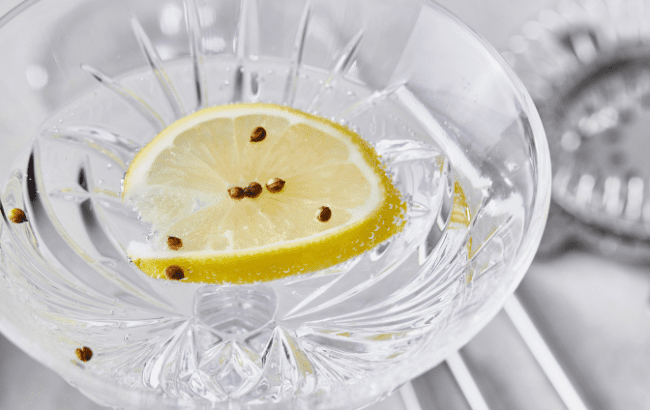
Gin endured a difficult 2023 as the effect of the spirit’s biggest domestic markets of the UK and Spain contracting filtered down into travel retail.
Gin’s woes have been compounded this year by the decreased purchasing power of European travellers. Duty free retailers are shrinking their ranges but some of these losses are being offset by growth in non-traditional gin markets.
“The marketplace in GTR as a whole is indeed quite challenging just now, given global economic challenges impacting consumer confidence and spending levels,” says William Ovens, global GTR director at Ian Macleod Distillers, owner of Edinburgh Gin. “The category has enjoyed a sustained period of rapid growth, meaning that the share of shelf space grew and grew. Now that rate of growth has slowed, and there is more pressure on shelf presence, and new listings are harder to secure.”
However, Ian Macleod Distillers expanded its retail footprint this summer with the opening of an Edinburgh Gin boutique at Edinburgh Airport. This 20-square-metre store showcased the brand’s recent distillery renovations, and included a tasting bar.
While sales in Europe have been tough for gin producers, the outlook further afield in non-traditional gin markets is considerably brighter. “UK domestic gin performance has declined year on year. However, we have actually seen an upside in our global gin sales,” says Oliver Storrie, GTR manager at Quintessential Brands, whose gin portfolio includes Greenall’s, Opihr, and Bloom. “Markets such as Latin America and Asia are in growth, with Opihr especially lending itself well to the Asian consumer.”
Despite these bright spots, the outlook for gin in travel retail remains muted, however, with IWSR forecasting a volume CAGR of only 2% between 2023 and 2028.
Rum
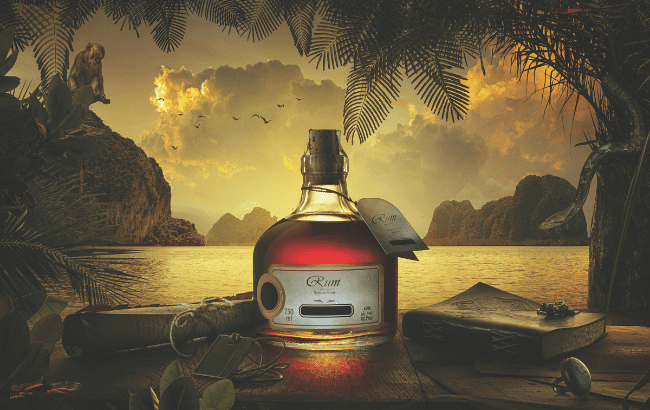
Rum continues to underperform in travel retail. This sustained underachievement comes despite the continued buzz around its ongoing premiumisation in many domestic markets worldwide, its feted status among leading mixologists, and the fact that aged, dark sipping rums boast many of the quality cues possessed by Scotch whisky and Cognac, travel retail’s two biggest money-spinners.
The latest IWSR data predicts the value and volume of the rum category will grow at a CAGR of 5% between 2023 and 2028 in GTR. Rum’s lack of a premium presence in Asia Pacific remains a significant obstacle for the category, as does the unwillingness of some brand owners to engage the channel with activations and exclusive launches.
Bacardí, by far travel retail’s best-selling rum, is arguably the only player able to move the category dial in the right direction. Over the past year, Bacardi Global Travel Retail has staged ‘Rum Tales’ activations at Miami and Frankfurt airports, aimed at trying to persuade travellers to trade up to higher-priced expressions, such as the Venezuelan label Santa Teresa 1796 and Facundo, a collection sourced from the private rum reserves of the Bacardi family.
Bacardi followed these promotions by launching a travel retail-exclusive version of Santa Teresa this August. Priced at US$450, the ultra-premium Santa Teresa Bicentenario Ron Ultra Añejo is described as containing the ‘oldest and most exclusive’ rums from the brand’s inventories, presented in a crystal decanter housed in a velvet-lined leather gift box, the sort of packaging typically associated with Scotch and Cognac.
The short- to medium-term forecast for rum may not look as rosy as other spirits but the multinationals are finally giving the category more attention. Diageo Global Travel has identified its recently acquired Philippine brand Don Papa as possessing growth potential in travel retail, alongside Ron Zacapa from Guatemala, while Moët Hennessy’s Eminente Cuban rum made its GTR debut at Paris Charles de Gaulle airport last year.
The rum category’s biggest catalyst is likely to come from the rapid growth of Indian outbound international travel in the years ahead. Indians are traditionally big consumers of low-priced domestic rums, but their tastes are moving upmarket. Local craft brands such as Idaaya, a sipping rum from the Himalayas, have already gained listings at key Indian airports this year, and others could follow in the footsteps of Indian whiskies by expanding their GTR distribution overseas.
Liqueurs
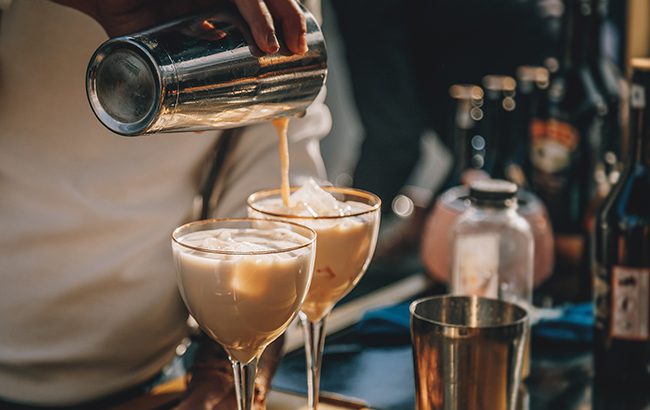
While Baileys continues to hog the top spot as travel retail’s best‐selling liqueur, the category’s standout performer in recent times has to be Campari Group’s orange‐hued bitter liqueur, Aperol. Last year, the brand enjoyed high‐double‐digit sales growth, a bravura showing for a standard‐priced product competing in a premium‐plus‐dominated trading environment.
Campari Group GTR has not coasted on Aperol’s huge domestic following, but staged ambitious omnichannel promotions, targeting European leisure travellers flying with easyJet, for instance, last summer, with offers and activities promoted onboard and at their holiday‐destination airports. The Frontier Award‐winning activation encouraged passengers to buy an Aperol Spritz Perfect Kit to learn how to make the perfect Aperol Spritz on their return home.
This January, the company leveraged its sponsorship of the Australian Open tennis championship by creating a 55 square‐ metre experiential zone at Melbourne Airport with Lotte Duty Free. More recently, the bitter liqueur has joined forces with Royal Caribbean cruise line during the summer for a range of promotional activities onboard its Oasis of the Seas ship, such as an Aperol pool party, live DJ sets, exclusive gifts, and branded giveaways. Biggar and Leith‐owned Irish whiskey liqueur Shanky’s Whip also recently gained listings with Harding Retail on board six P&O ships.
Category leader Baileys has had a quieter year in travel retail but the Irish cream liqueur has been involved in Diageo Global Travel’s ongoing push to make its business model more sustainable. Sarah Shimmons, marketing and innovation director of Diageo Global Travel, says: “We were delighted to trial the Baileys aluminium bottle this year – a bottle five times lighter than glass, and with a 44% reduction in carbon emissions from production. We are looking to extend the trial to new locations and partners.”
RTDs
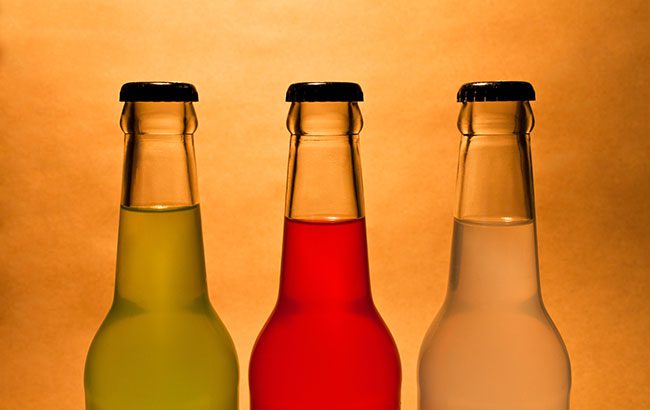
“The ready-to-drink (RTD) category has seen a significant resurgence in travel retail over the past 12 months, bouncing back strongly compared with the challenging years of the pandemic,” says Wynter Karo, co‐founder of Tequila cocktail brand Pimentae. She claims its “multi‐format cocktail range is resonating well with travellers who appreciate our artisanal approach and unique flavour profiles”, and that sales are up by 200% year on year. As a category, RTDs grew by 25% in volume in 2023, and by 13% in value, as tracked by the IWSR.
Karo believes the success is all part of premiumisation. “Consumers are looking for high‐quality well‐crafted RTD options that stand out in terms of taste, packaging, and brand story,” she says. While Pimentae has been working with Small Batch Social in its new airside venue at Gatwick Airport, rival canned cocktail brand Tom Savano has focused on airlines. “The lightweight, single‐serve format of RTDs makes them perfect for service in cabins, where space and weight are issues,” says founder James Kerslake. “Staff training is minimal, and customers can receive a much higher‐quality drink than previously available.”
He continues: “More airlines than ever are launching RTD programmes, though a lot of them are still feeling their way carefully into a category they have previously not been involved with. It is very difficult to compare sales pre‐pandemic, as I don’t believe RTD was present to any major degree in the travel retail channels.”
So far this year, Kerslake reports that sales of Tom Savano are up by more than 300% on the same period in 2023. As for the future, the IWSR is predicting RTDs will grow by 9% in volume and value from 2023‐28 on a CAGR basis.
Related news
Key factors shaping global travel retail
